Nineteenth Century
Counterfeit Ferris Wheel Certificates
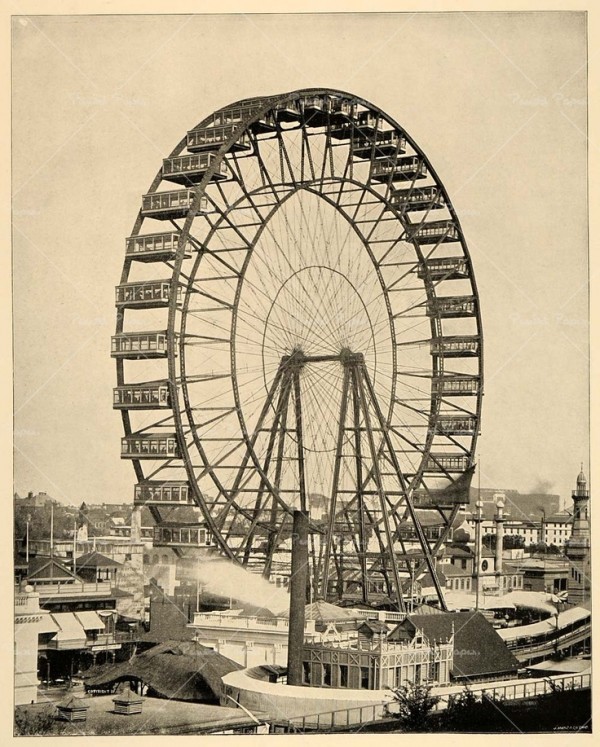
So popular and prestigious was a ride on the first Ferris Wheel, that riders were given a certificate testifying to their experience.
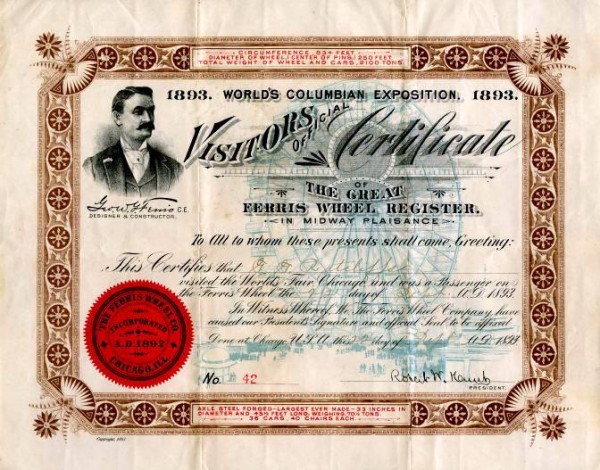
Naturally enough, this soon lead to a market for counterfeits!
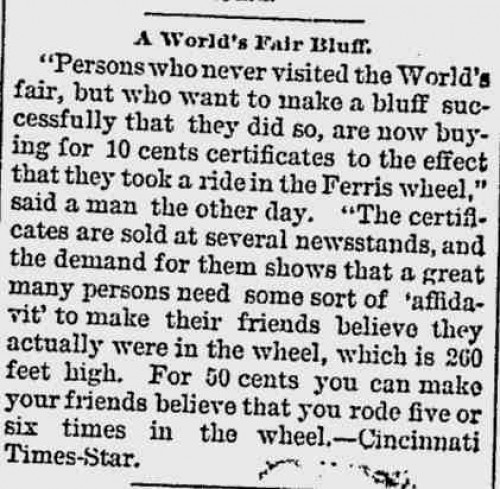
Original article here. (Scroll down.)
Posted By: Paul - Mon Feb 16, 2015 -
Comments (11)
Category: Certificates, Diplomas, and Other Testaments of Achievement, Fairs, Amusement Parks, and Resorts, Nineteenth Century
Flesh Prices
The purpose of this graphic was to show how high the price of meat was during the 1870 Siege of Paris. But what I find odd about it is the inclusion of elephant and bear meat, which apparently were on sale during the siege and had a set price. So if you wanted an elephant steak, it would have cost you 15 shillings (or $3.60) a pound. Assume that the modern currency equivalent would be a lot higher.Source: Illustrated World, April 1918.

Posted By: Alex - Tue Jan 27, 2015 -
Comments (12)
Category: Food, Nineteenth Century
Welbeck Abbey
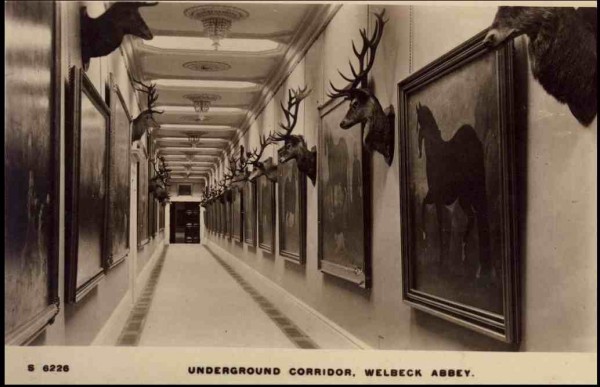
A famous eccentric, the Fifth Duke of Portland spent a fortune over twenty-five years constructing fantastical additions to his estate, Welbeck Abbey, including fifteen miles of underground tunnels.
The Duke was very introverted - he did not want to meet people and never invited anyone to his home. His rooms had double letterboxes, one for ingoing and another for outgoing mail. His valet was the only person he permitted to see him in person in his quarters - he would not even let the doctor in, while his tenants and workmen were told never to acknowledge his presence (a workman who saluted him was reputedly dismissed on the spot) and they received all their instructions in writing.
His business with his solicitors, agents, and the occasional politician was handled by post. The Duke maintained an extensive correspondence with a wide-ranging network of family and friends, including Benjamin Disraeli and Lord Palmerston. He is not known to have kept company with any ladies, and his shyness and introverted personality increased over time.
His reclusive lifestyle led to rumours that the Duke was disfigured, mad, or prone to wild orgies, but contemporary witnesses and surviving photographs present him as a normal-looking man.
He ventured outside mainly by night, when he was preceded by a lady servant carrying a lantern 40 yards ahead of him. If he did walk out by day, the Duke wore two overcoats, an extremely tall hat, an extremely high collar, and carried a very large umbrella behind which he tried to hide if someone addressed him.
If the Duke had business in London, he would take his carriage to Worksop where he had it loaded onto a railway wagon. Upon his arrival at his London residence, Harcourt House in Cavendish Square, all the household staff were ordered to keep out of sight as he hurried into his study through the front hall.
He insisted on a chicken roasting at all hours of the day, and the servants brought him his food on heated trucks that ran on rails through the underground tunnels.
Wikipedia page.
Long essay here.
Posted By: Paul - Tue Jan 27, 2015 -
Comments (7)
Category: Architecture, Eccentrics, Europe, Nineteenth Century
Mystery Illustration 4
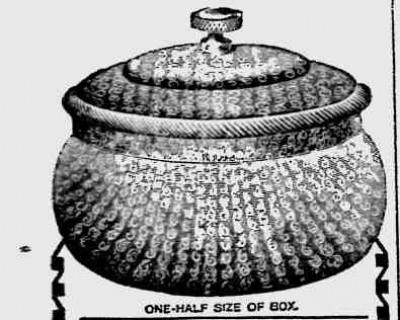
What household product is kept inside this lovely container?
The answer is here. (Scroll up a bit.)
Posted By: Paul - Thu Jan 15, 2015 -
Comments (7)
Category: Products, Nineteenth Century
Paradise Regained
1898 ad for the Florida East Coast Railway/Steamship line running from Jacksonville to Key West. I think all of us here at WU would agree that Florida definitely is special.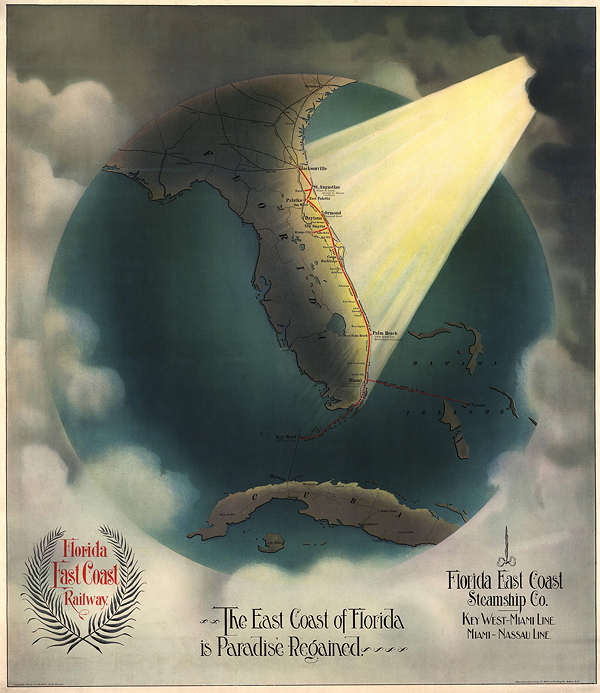
via Mappenstance and Library of Congress
Posted By: Alex - Sun Jan 04, 2015 -
Comments (5)
Category: Advertising, Nineteenth Century
Tom Edison Jr.‘s Electric Mule
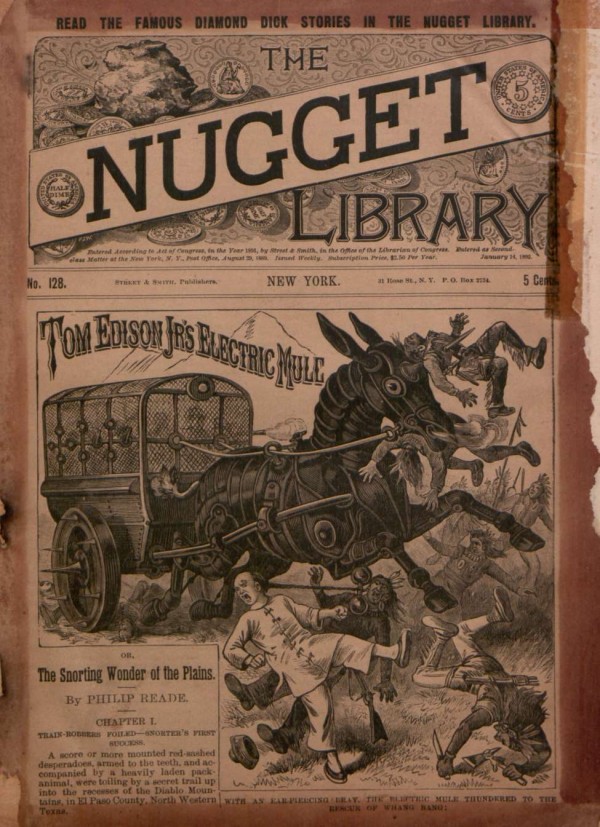
This cover could hardly be improved upon for macabre glee and impartial offensiveness.
Read the story here.
Posted By: Paul - Fri Jan 02, 2015 -
Comments (8)
Category: Animals, Mad Scientists, Evil Geniuses, Insane Villains, Stereotypes and Cliches, Science Fiction, Nineteenth Century
The Angel of Hadley
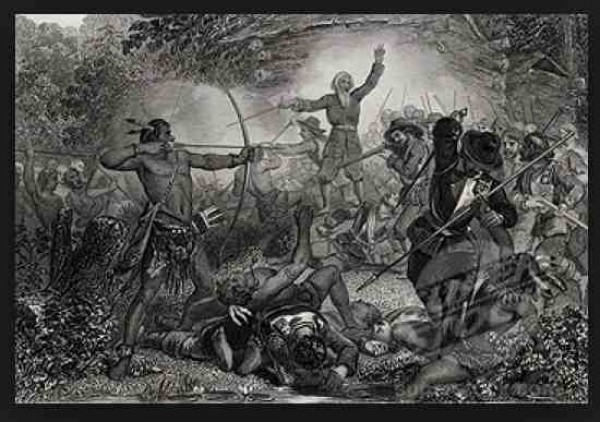
I had long been aware of the WWI legend of The Angel of Mons, in which a piece of deliberate fiction was accepted as literal truth.
But I was unaware until recently that right in my own backyard, in nearby Hadley, Massachusetts, a similar bit of fiction-as-history existed, the Angel of Hadley, the account of how a mysterious elderly warrior saved settlers from the Indians.
Another good piece on the subject here.
Posted By: Paul - Mon Dec 29, 2014 -
Comments (1)
Category: Hoaxes and Imposters and Imitators, Myths and Fairytales, Historical Figure, Europe, North America, Nineteenth Century, Seventeenth Century, Native Americans
Tatcho
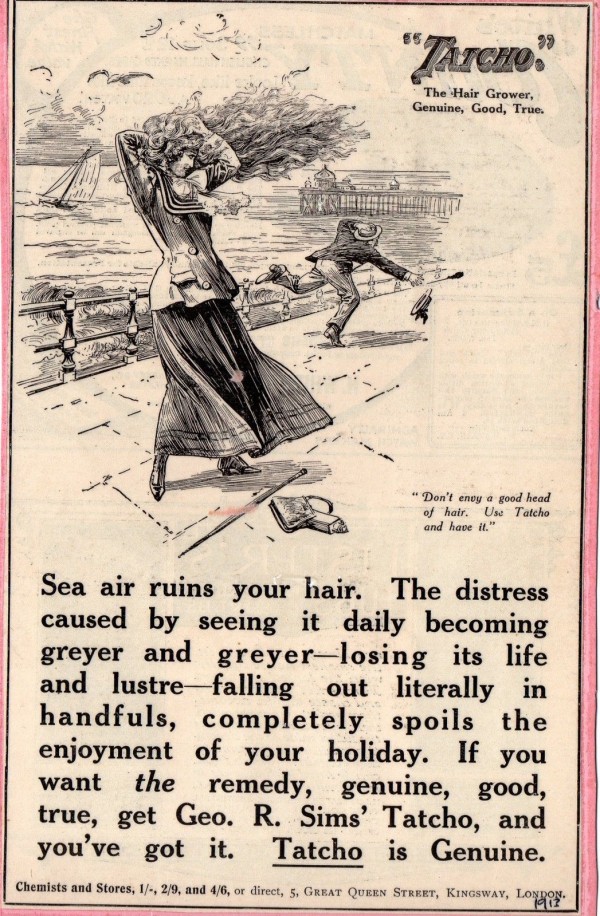
[Click to enlarge]
Who ever knew that a nice day at the beach could cause such horrors?
Explanation of Tatcho.
Posted By: Paul - Mon Dec 22, 2014 -
Comments (4)
Category: Oceans and Maritime Pursuits, Nineteenth Century, Hair and Hairstyling
Queen Victoria in Goggles
Queen Victoria looked very steampunk when she had to wear goggles in 1899 in an attempt to cure her cataracts. Though I'm not sure how goggles would have helped without surgery, which she refused to have.
Source: The Philadelphia Times - July 30, 1899
And in a case of art imitating life, you can buy a "Steampunk Queen Victoria" mug here. I'm not sure if the site selling the mug realizes that Queen Victoria actually wore goggles like this in real life.

Posted By: Alex - Wed Dec 17, 2014 -
Comments (9)
Category: Nineteenth Century
Criminals Named Christmas
There was Christmas Jones, sent to prison for debt in January 1815.Christmas Allen (father and son), both charged with larceny.
And Christmas Crisp, who did six months for larceny in 1837. His son, Christmas Crisp Junior, appears to have been an honest man.
Perhaps being named Christmas was the 19th Century equivalent of having the middle name Wayne. [via Criminal Historian]
Posted By: Alex - Sat Dec 13, 2014 -
Comments (3)
Category: Crime, Holidays, Odd Names, Nineteenth Century

| Who We Are |
|---|
| Alex Boese Alex is the creator and curator of the Museum of Hoaxes. He's also the author of various weird, non-fiction, science-themed books such as Elephants on Acid and Psychedelic Apes. Paul Di Filippo Paul has been paid to put weird ideas into fictional form for over thirty years, in his career as a noted science fiction writer. He has recently begun blogging on many curious topics with three fellow writers at The Inferior 4+1. Contact Us |




